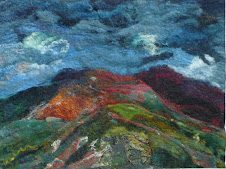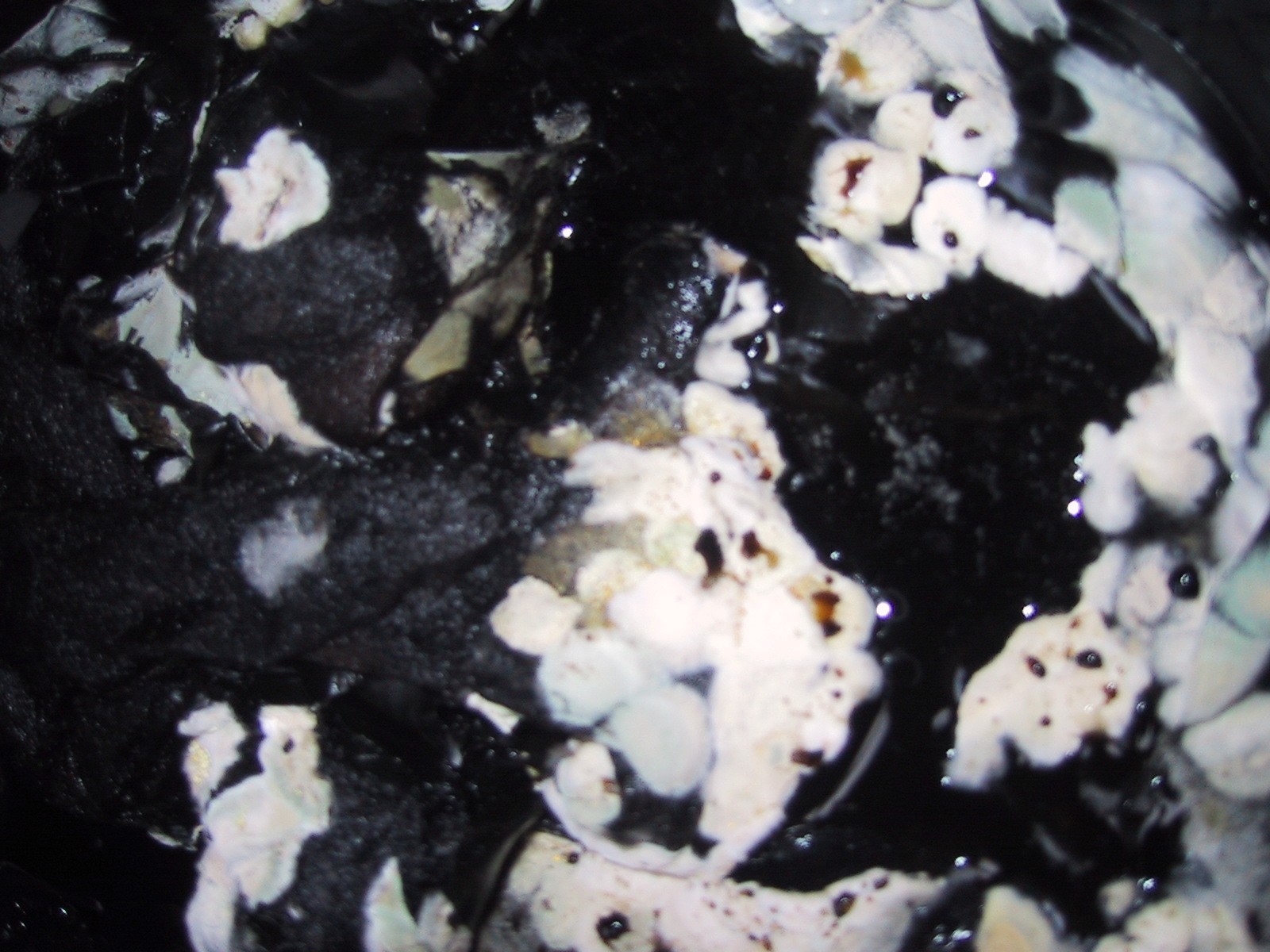The reason for the title "moving on" to this blog is as some of you may know is that
recently I was subjected to offensive letters and emails by Mrs Joan Wells of Lincolnshire ( to distinguish her from any other Joan Wells) and her
friend Peter Macphail.. However thanks to the support of all my friends and blog followers who have been quite magnificent I have got
through it and have now deleted the blogs which contained all the offensive letters
I had received. This blog is about having a bit of fun with bananas. .An alternative title of which could be
Never throw your bananas away.
Last summer I met Michel Garcia at ISEND 2011 natural dye conference in France and later took a three day workshop with him using his innovative sugar and lime vats. These indigo vats use fruit sugar as the reducing agent instead of either the tradional fermentation process which result in reduction, or the modern chemicals which do the same. For those baffled by the whole indigo dyeing process reduction is the process by which the insoluble blue powder of indigo (more correctly called ndigotin) is turned into its soluble dyeing form. See it as one chemical biting a bit off another and changing it so it is soluble and will dye. The oxygen in the air will change it back. and the fibres go from yellow to blue. Confused? Read on.
I wrote about making up a lime fructose
( fruit sugar vat) last year and
Leena has written an excellent and very thorough account of her experiments with the sugar lime vats.
Jane Deane also has a fascinating series of posts about her experiments too with the 123 vat including her use of henna snd bananas
Michel says that the fruit should be ripe and as you can see when I returned form a weeks holidays my bananas were very ripe! Tired as I was by a long drive I leapt on them with cries of delight.
I didn't get to them till yesterday ( Monday) so they sat in the fridge for two days .
I had no idea how much indigo the bananas would reduce or to put it another way I had no idea how much fruit sugar the bananas would contain. The significance of this is that Michel uses the ingredient of his vat in proportions. Hence it's title the 123 vat: I part indigo to two parts sugar to three parts lime ( the lime being calcium hydroxide).
Hmm!
I guessed:
- I mixed 5g of indigotin powder to a paste with hot water.
- I poured 2 litres of very hot water into a stainless steel pan. This is not a vat that has to be kept hot but is a vat that needs to be started hot at 80 degrees C.
- I added the bananas, skins and all, and mushed them up.
- I poured in the indigo paste, stirred
- I added 15g of calcium hydroxide stirred and checked the pH which was at 10.
- This is what the vat looked like straight away.
Then I left it and went had a cupof red bush tea and made a phone call or checked emails for about ten minutes
The vat cooled down quite rapidly to tepid.
The bubbles are now bluer and there is a scum of indigo spread finely over the surface. This look to the vat is quite typical of lime vats -(the other one being the zInc lime vat) However in retrospect I think I should have stirred it and that this would have concentrated the bubbles in the centre.
The Vat after 30 minutes . The blobby stuff under the surface is the bananas
Then I added pieces of cotton -dry. MIchel does this and it is also a shibori technique for keeping your patterns very crisp. It definitely works better when the pH is high as it is in this case
One of the differnt things about this vat is that Michel puts the fabric in dry, scrunches it around in the vat and pulls it out so the fabric is only immersed for a minute or less . However some others using this vat have reported a rapid fade of colour. Michel is a chemist and my chemistry is an A Level taken forty years ago so I bow to his superior knowledge but my gut feeling is that indigotin needs time to move through the fabric so I left mine in for 15 minutes the first time - in the vat which had been standing for ten miutes- then for half an hour or so inadvertantly in the vat which had been sitting for half an dhour. This latter vat appeared to be the more reduced vat too.
 |
| Pulling cotton out of the vat-ignore the red I think it was just the flash |
The cotton is going blue. It came out of the vat looking much greener but had already started to change by the time I got the gloves off and picked up the camera. .
Dyed cotton a little blotchy -which might be caused by me not moving it around enough but a nice blue.















































